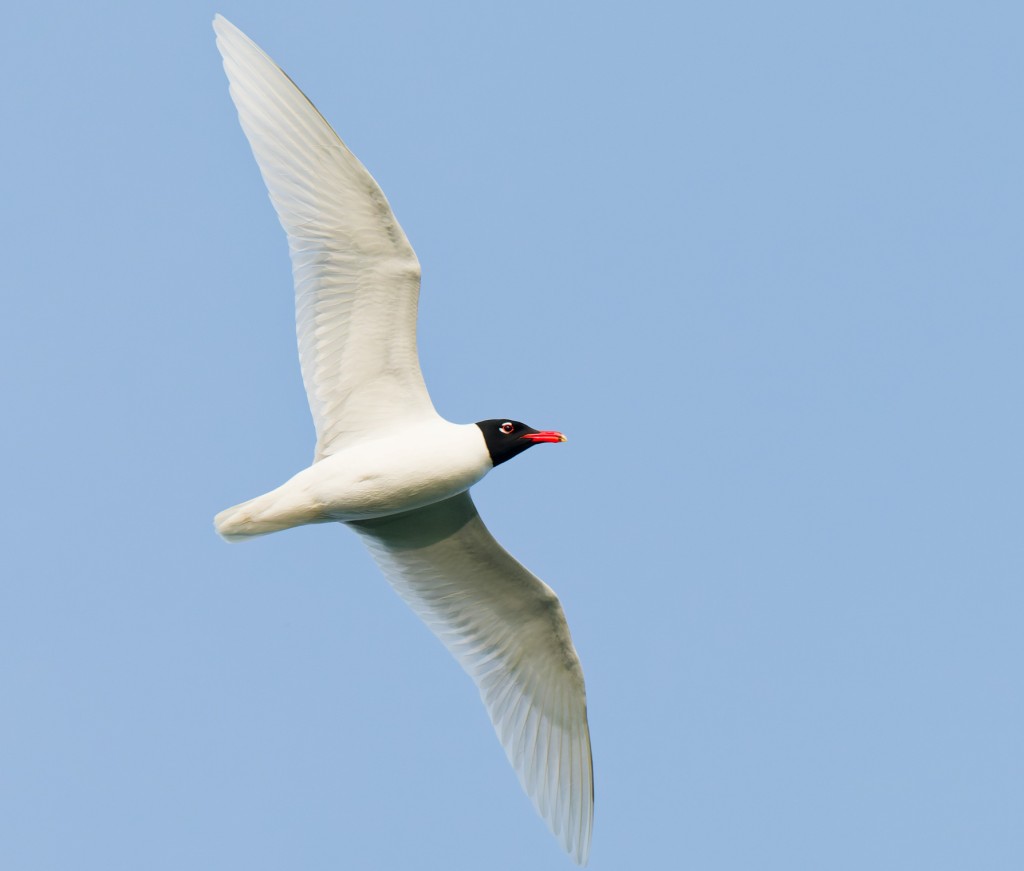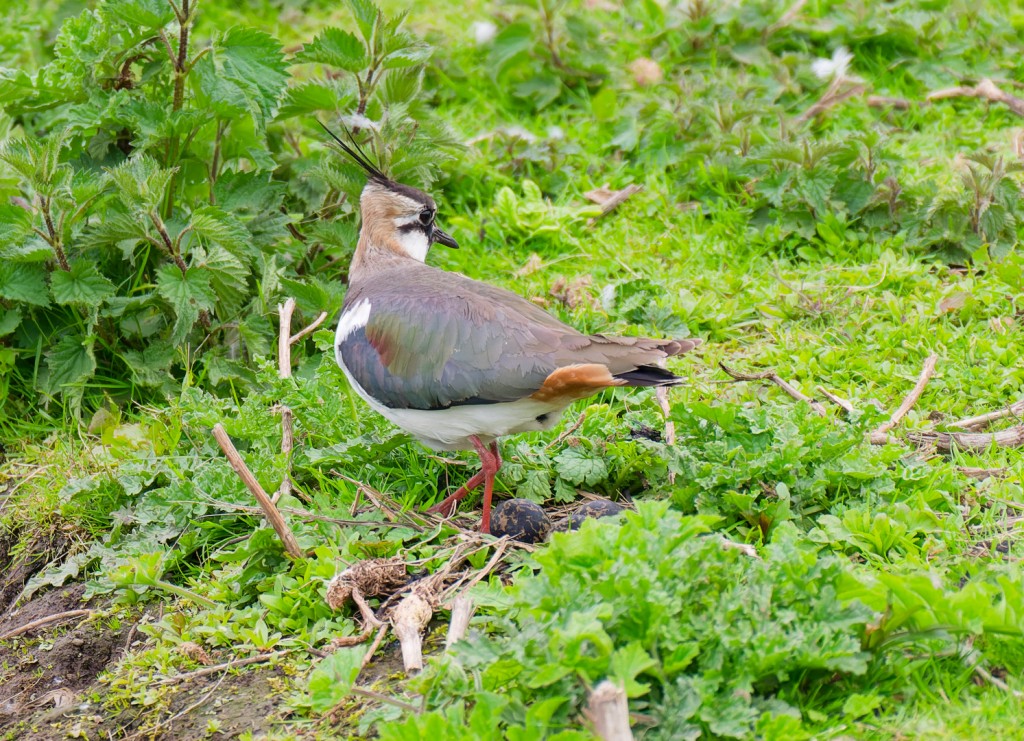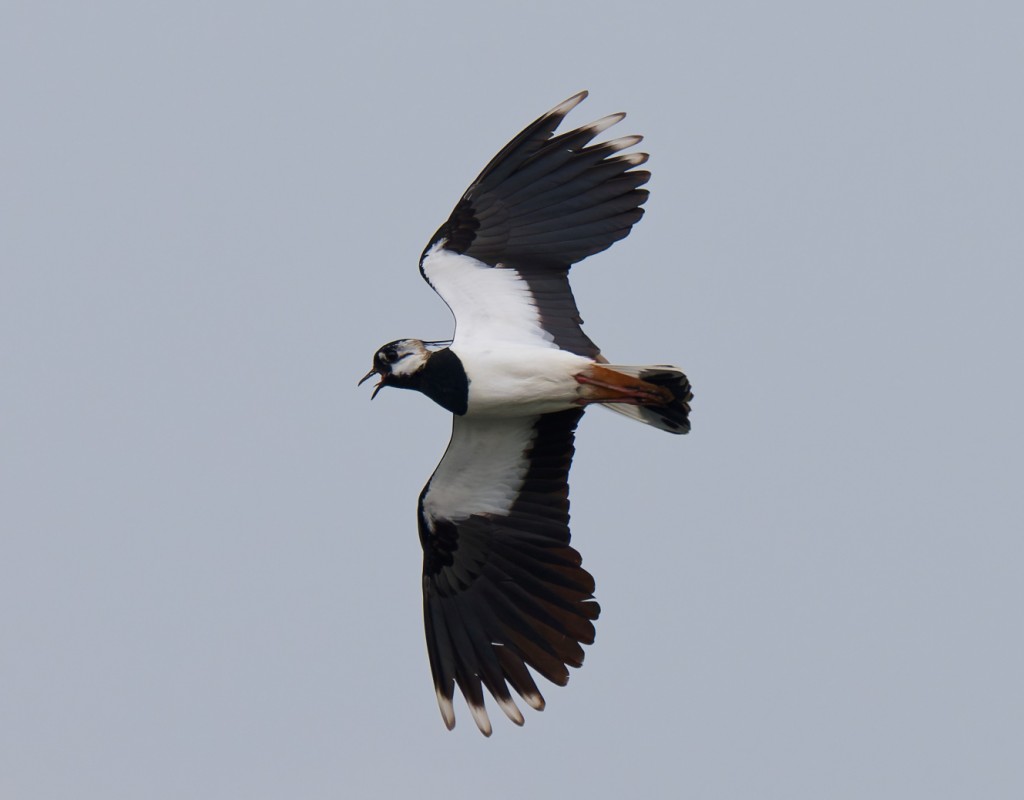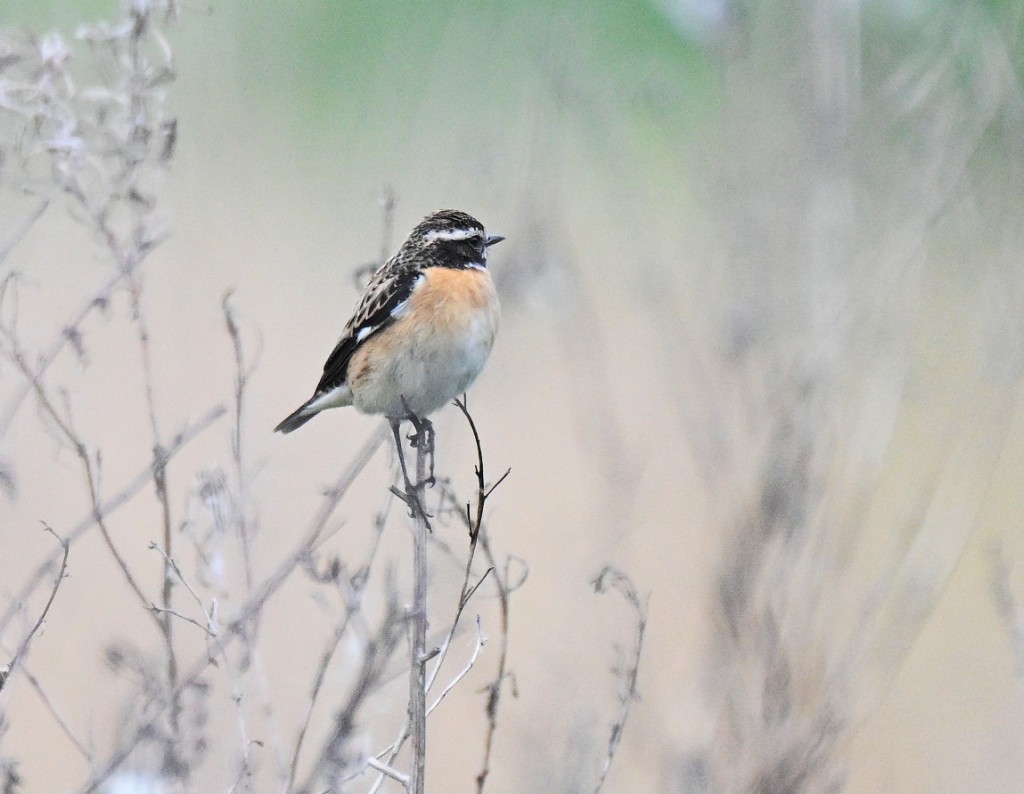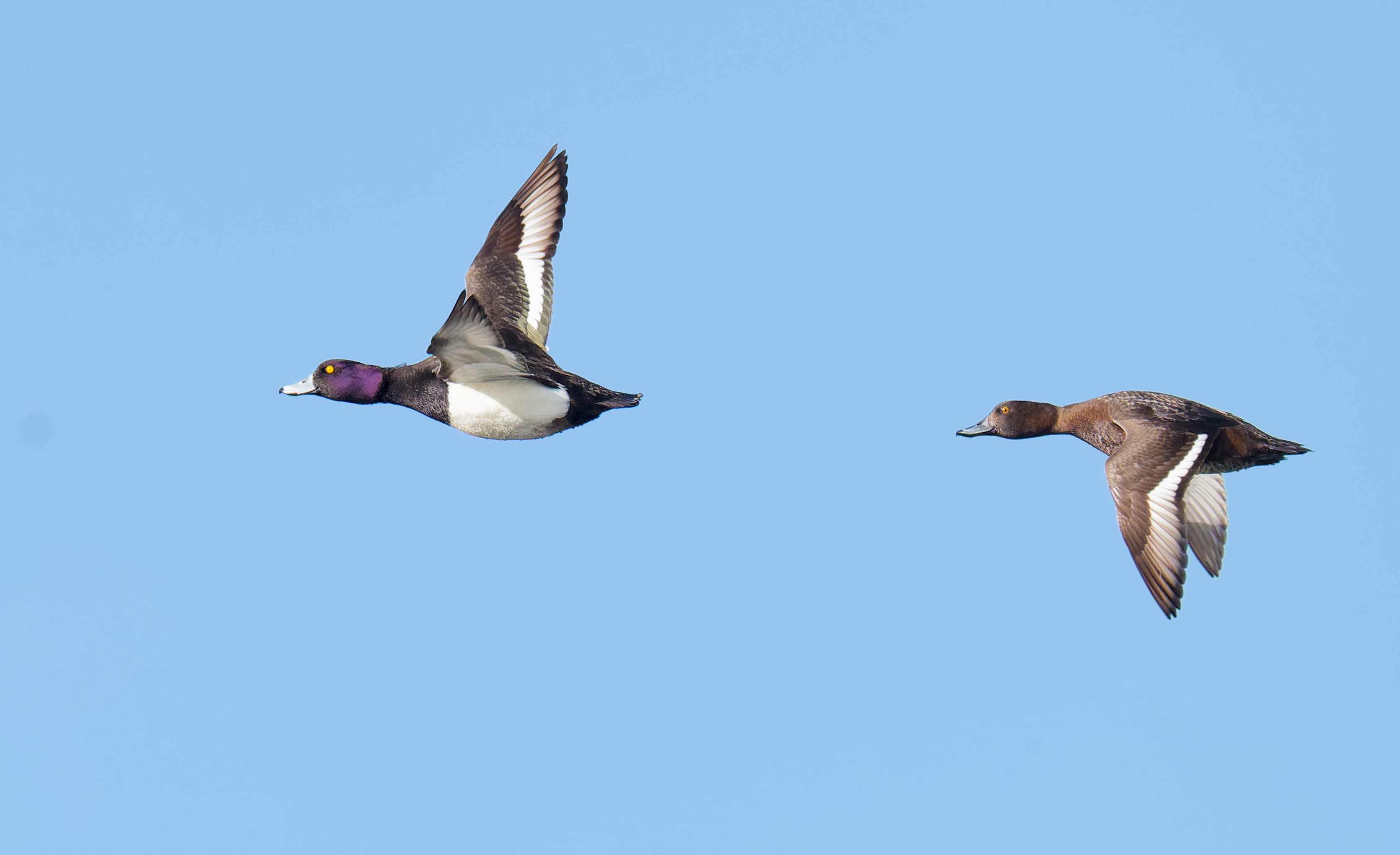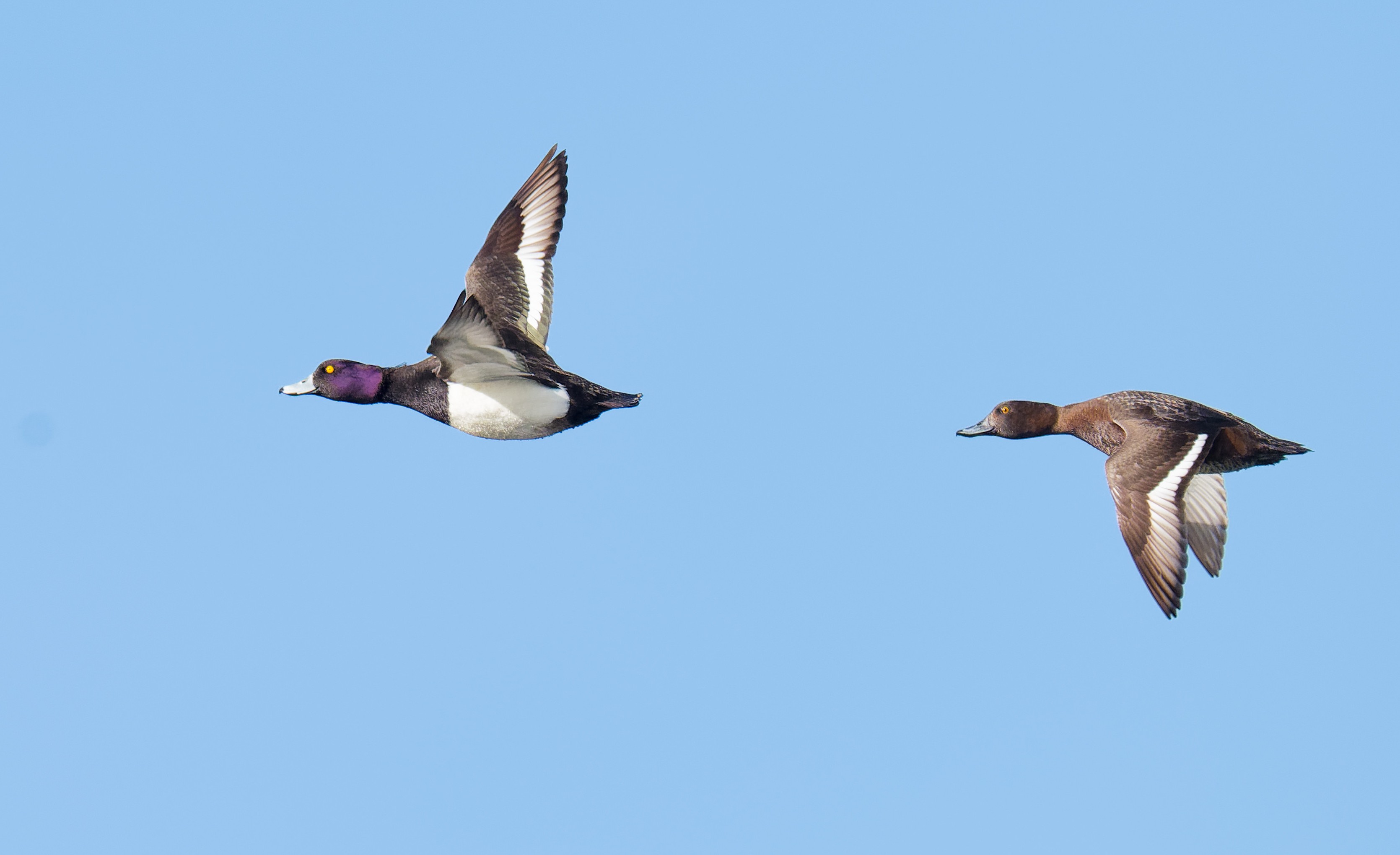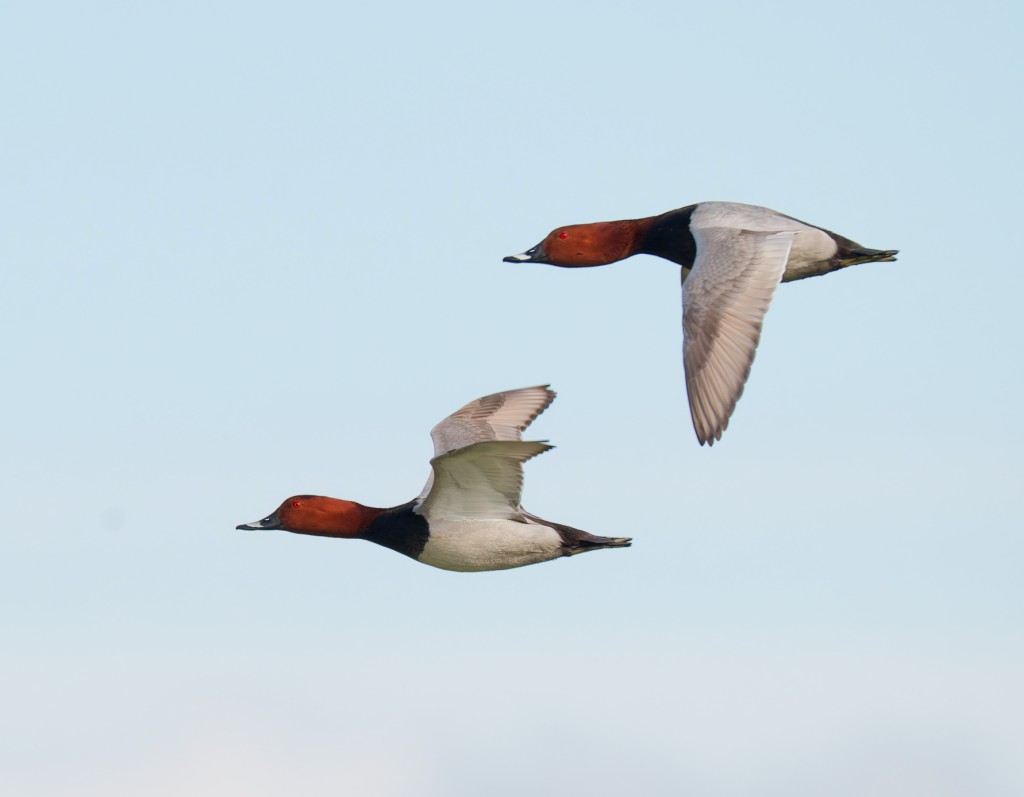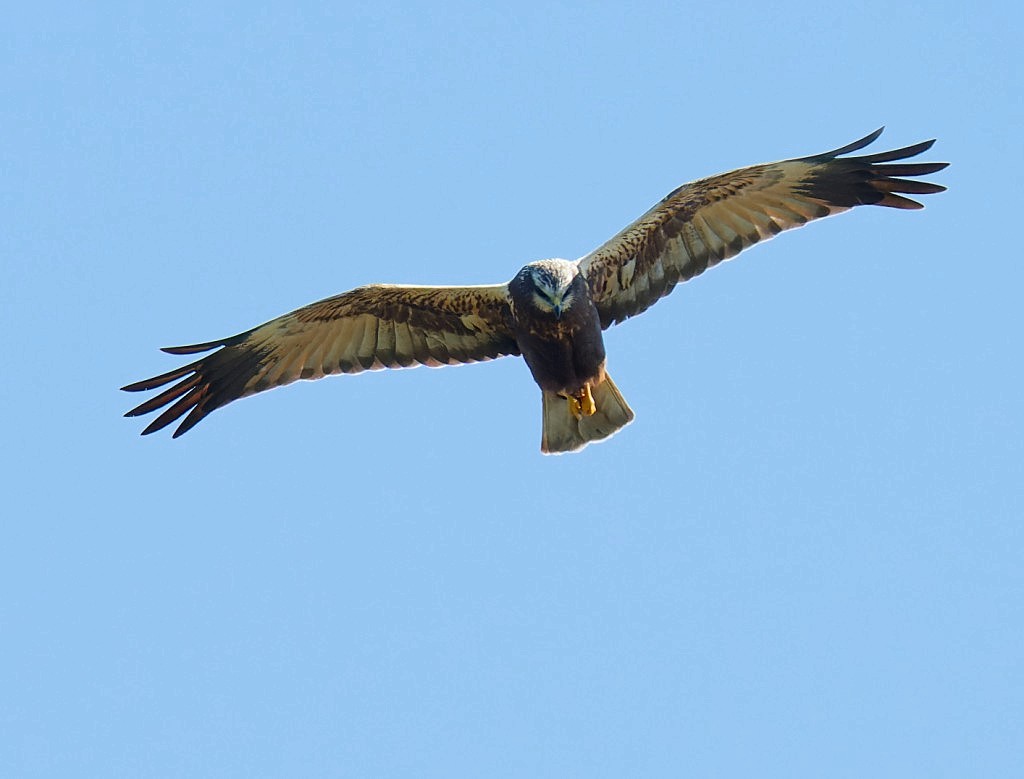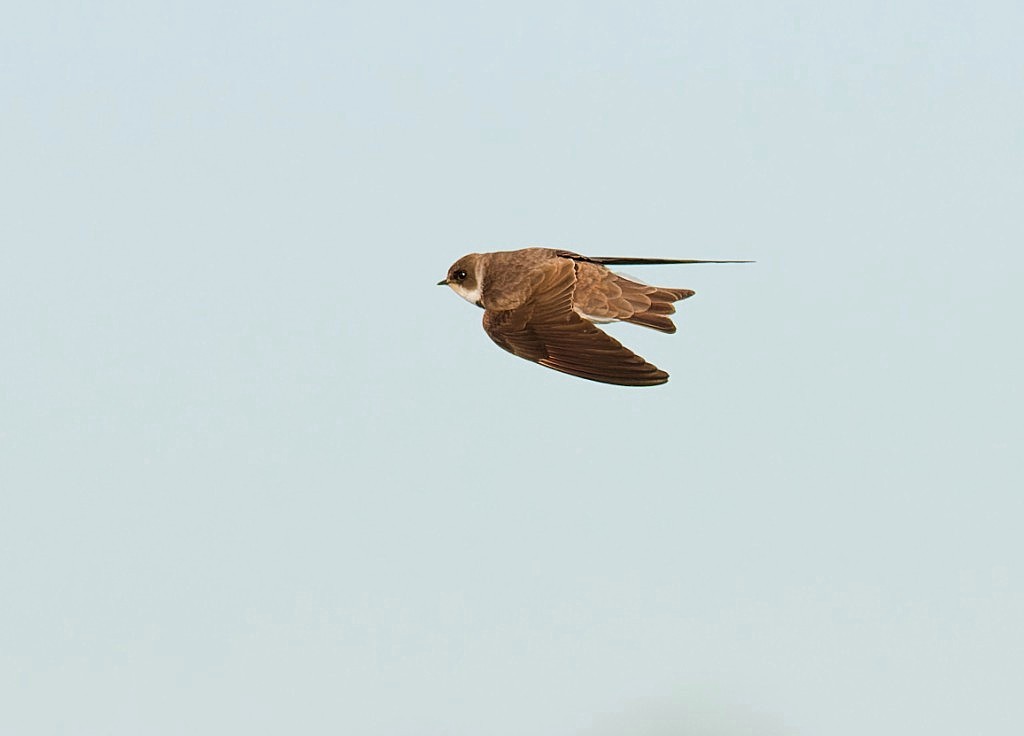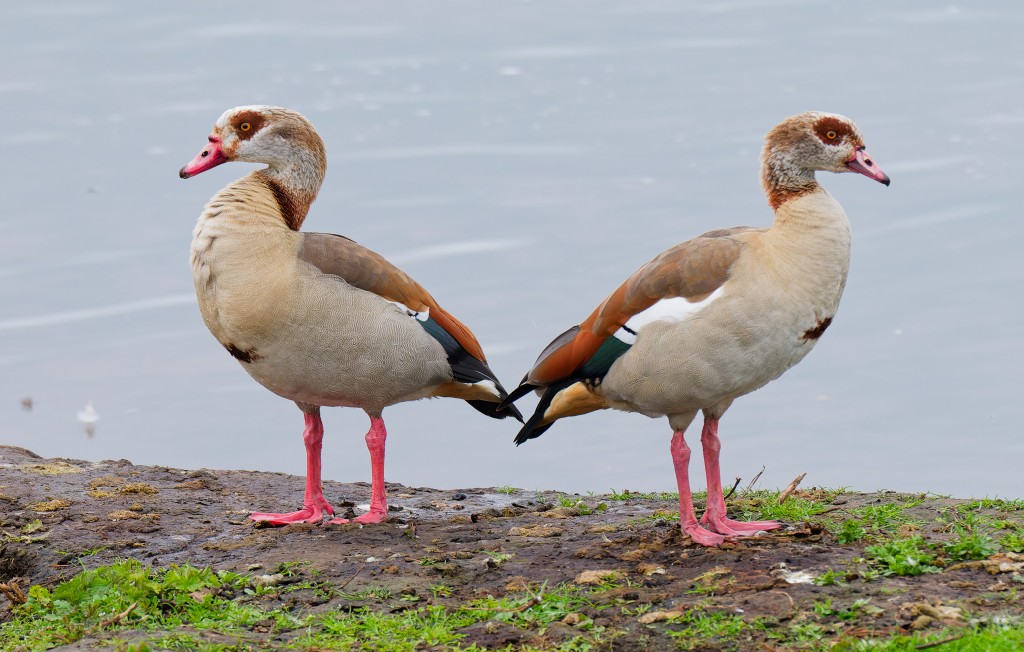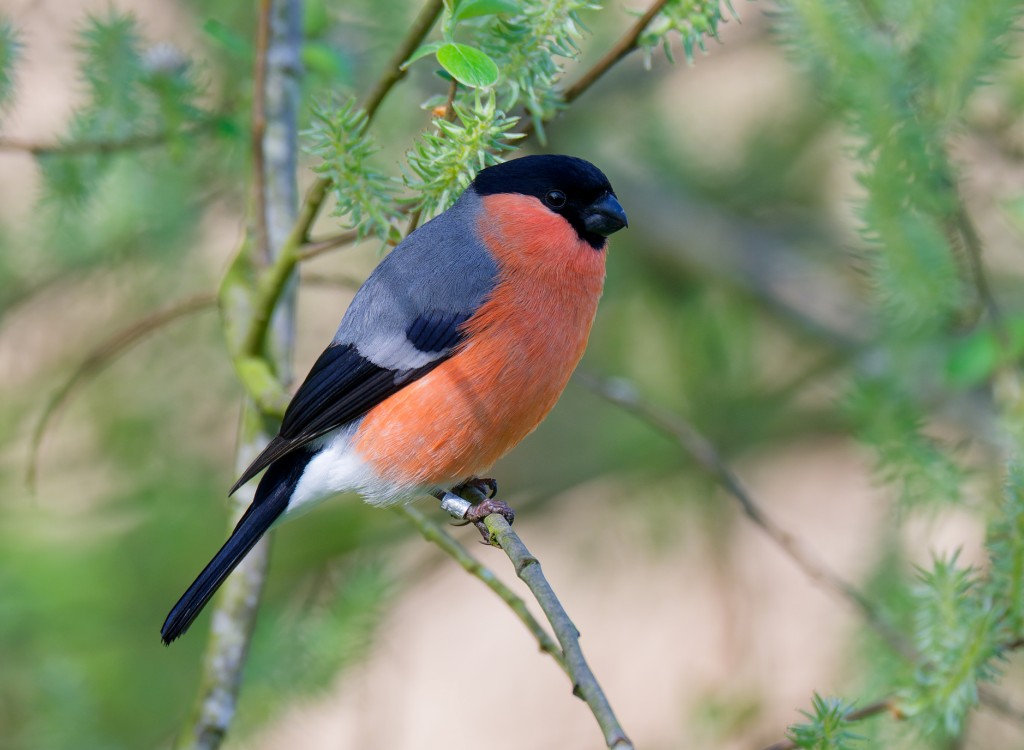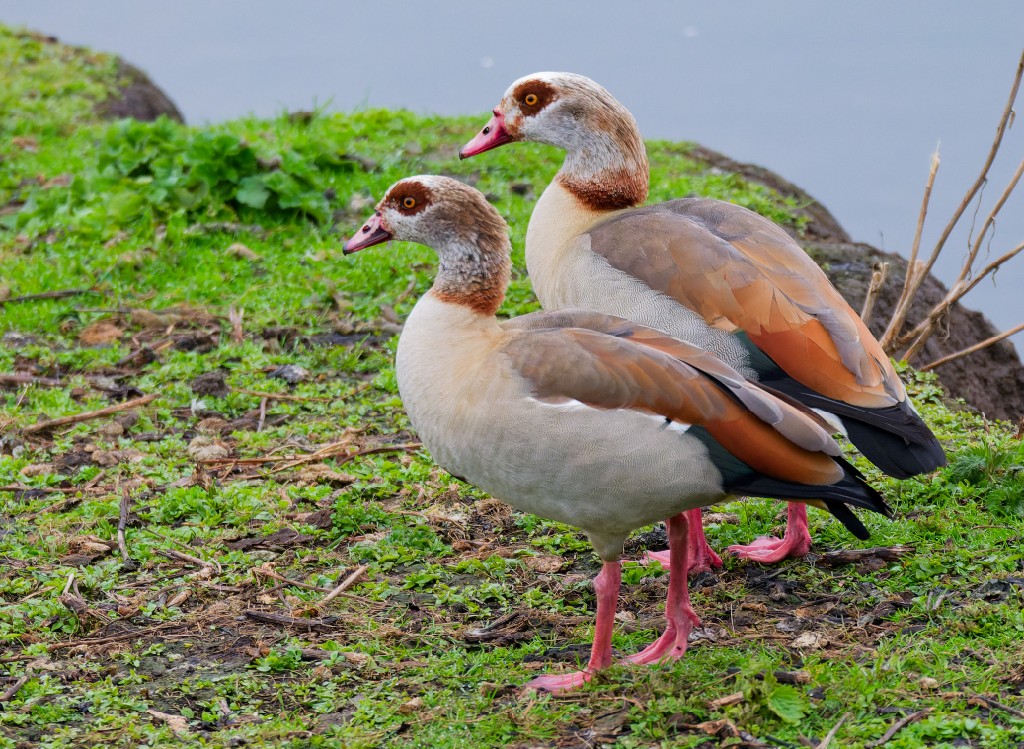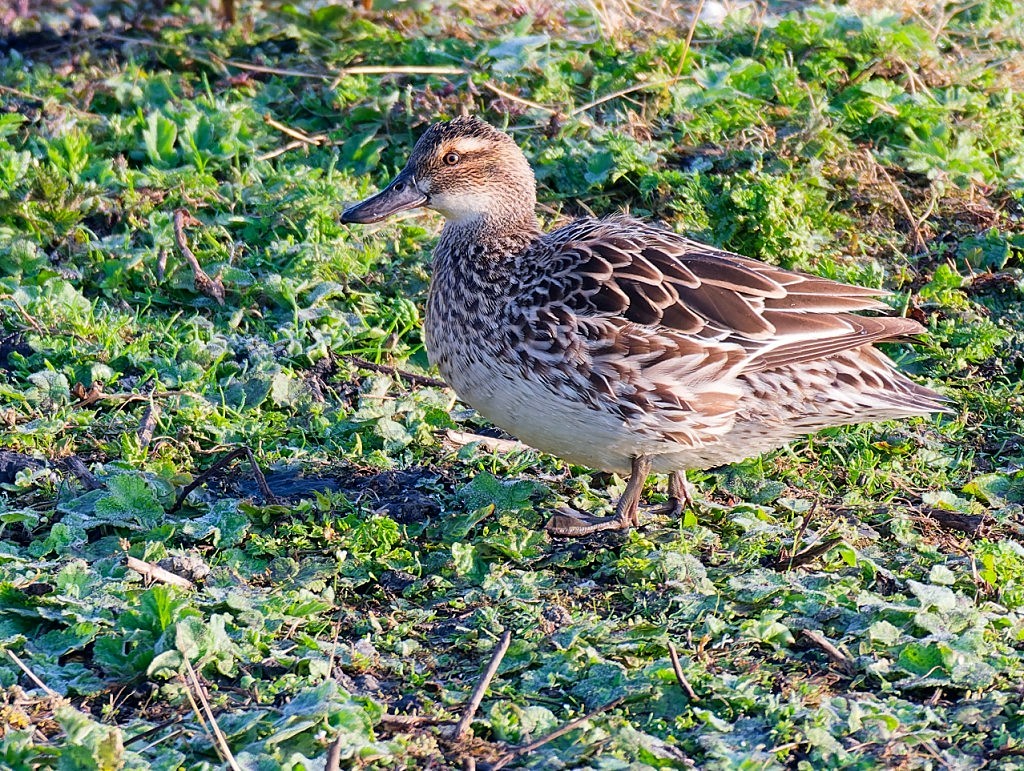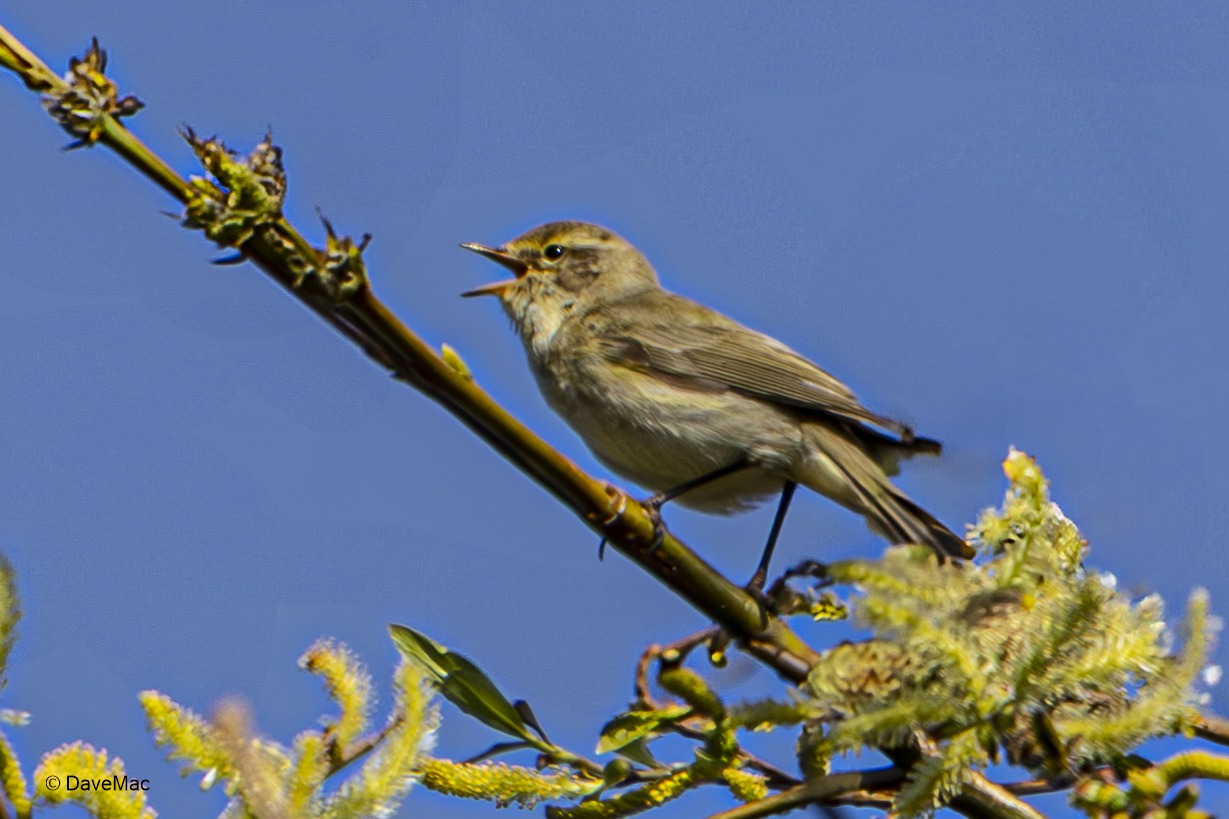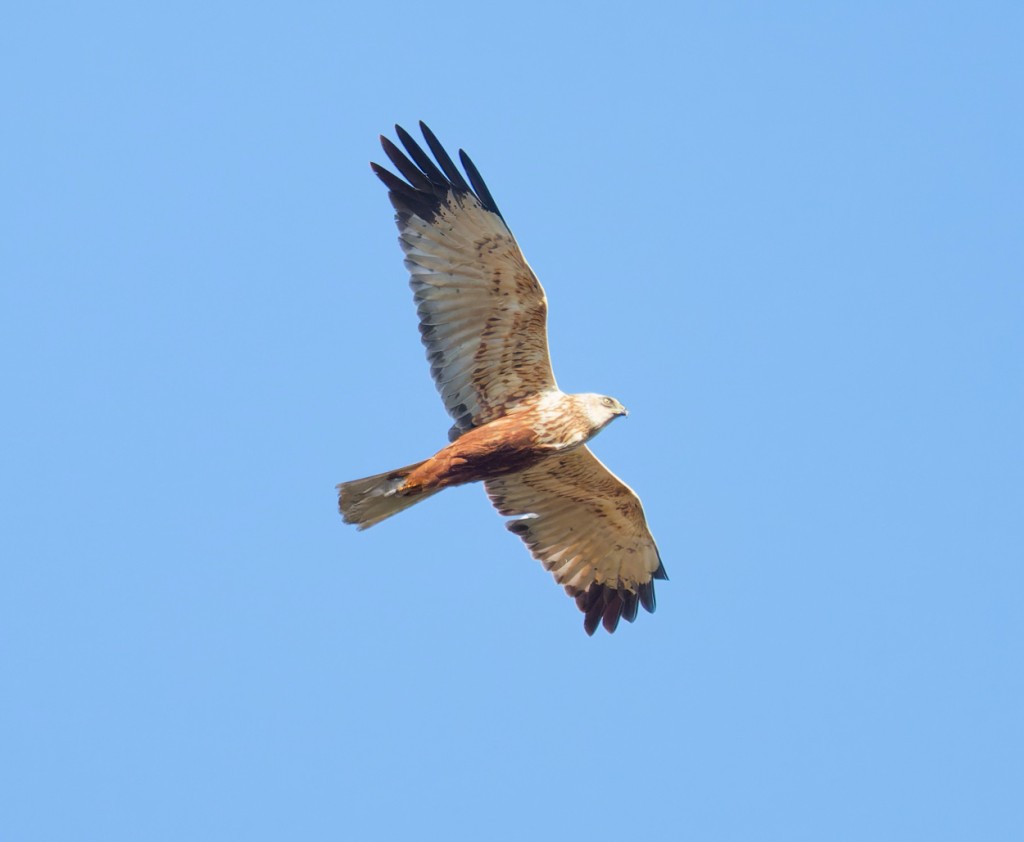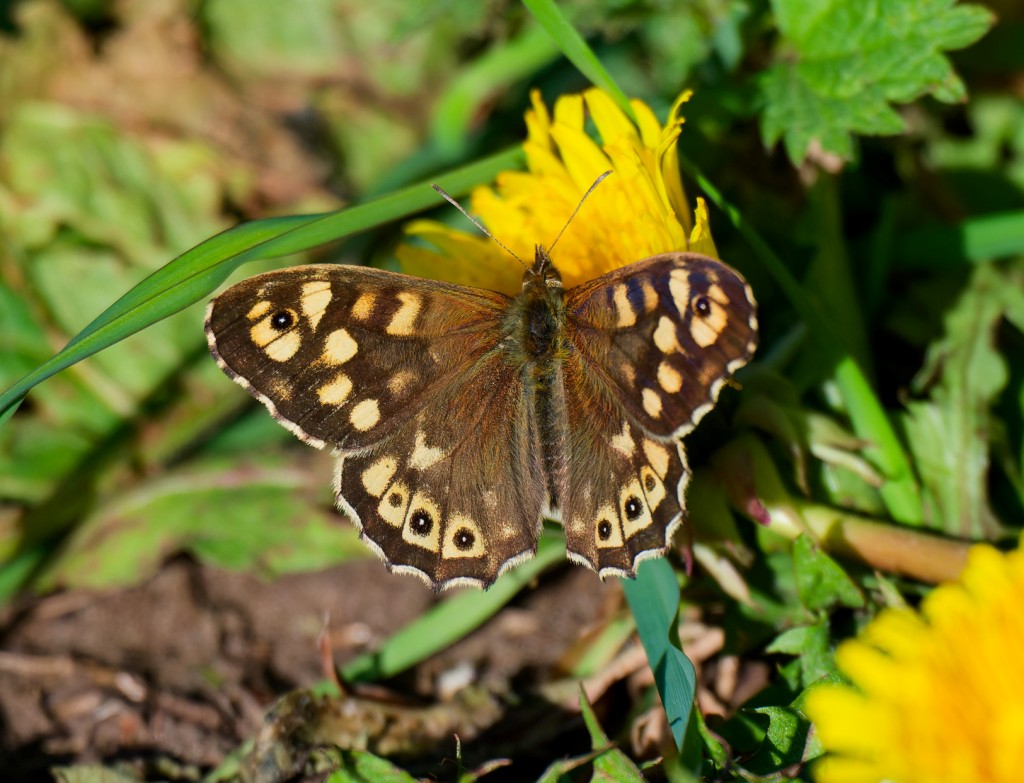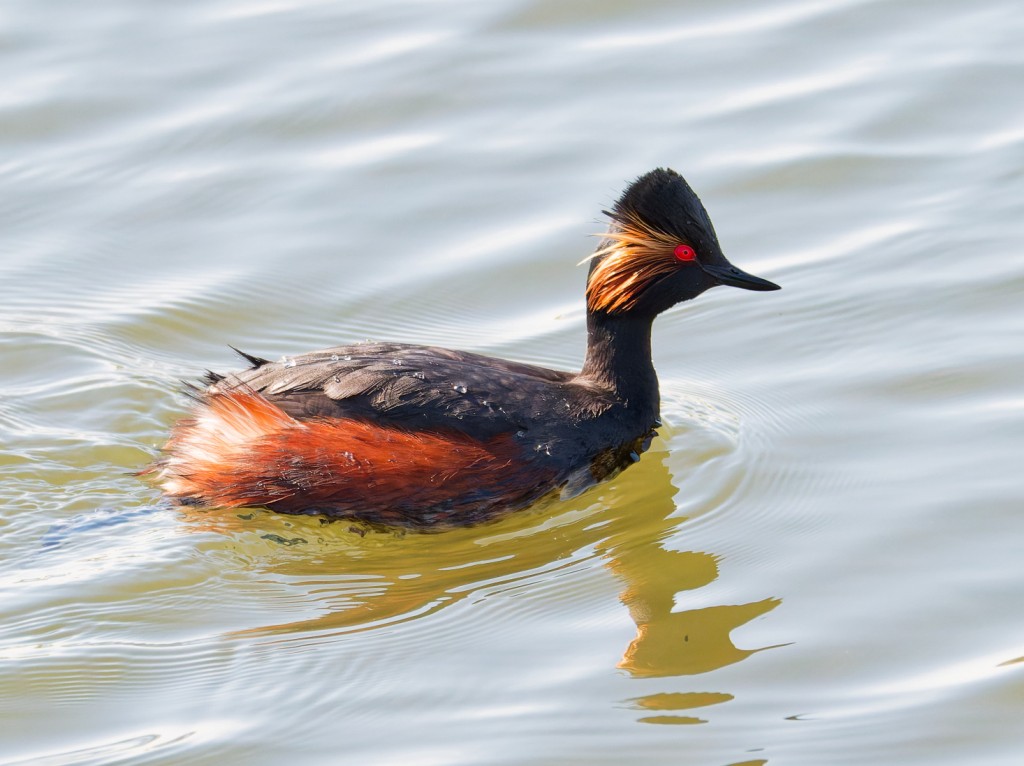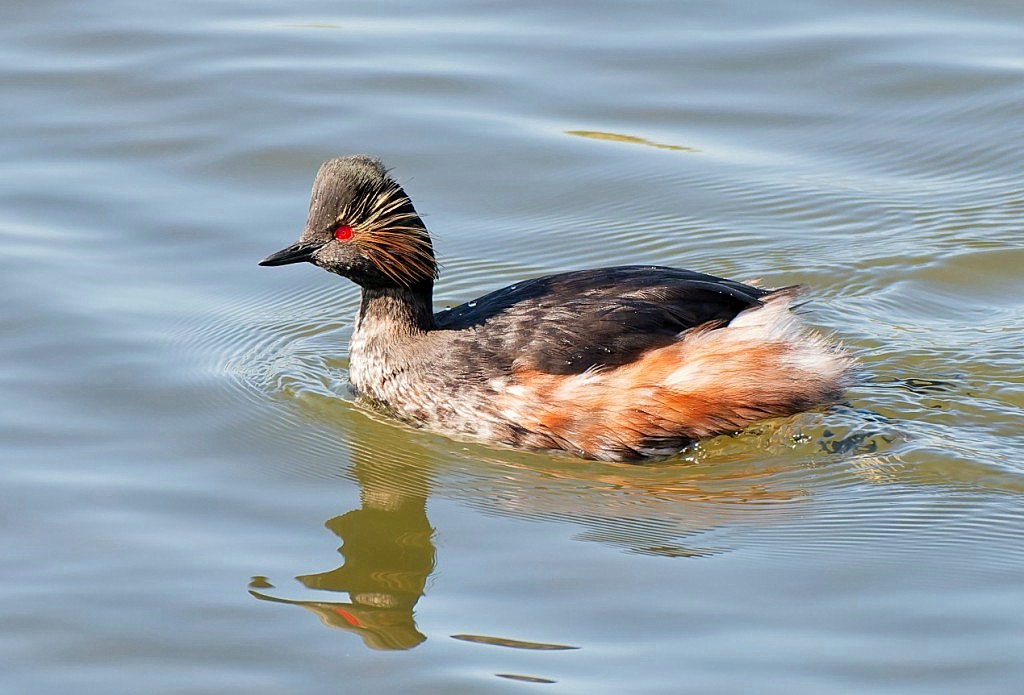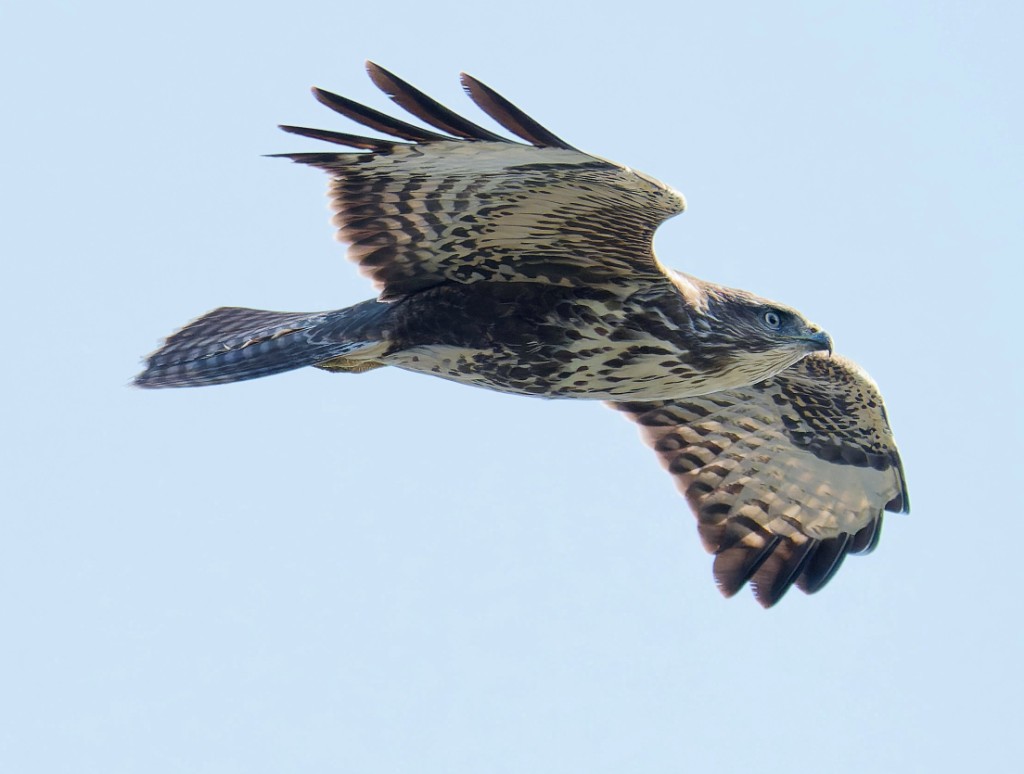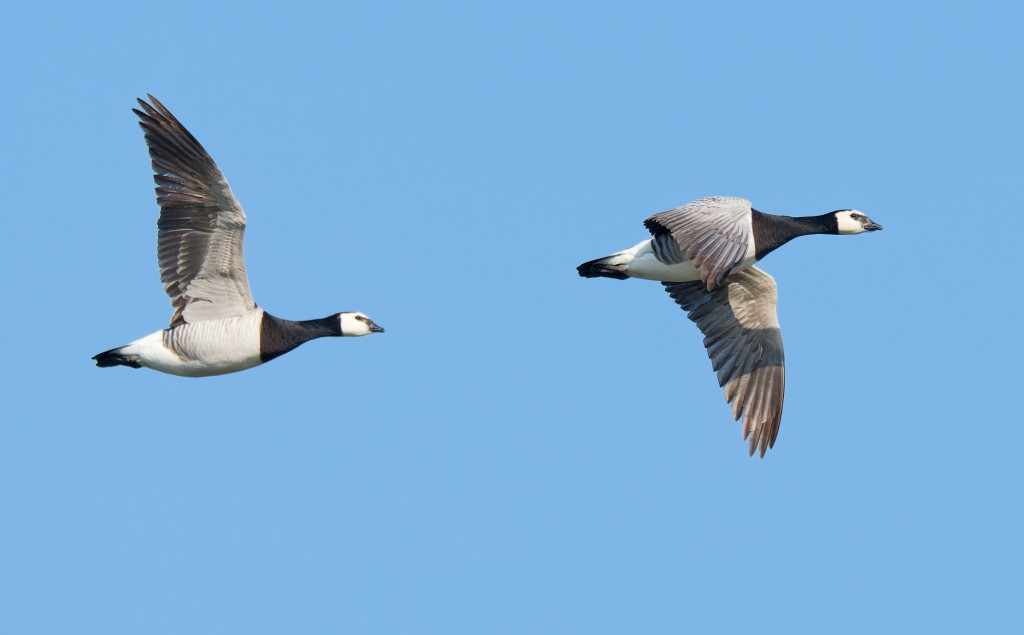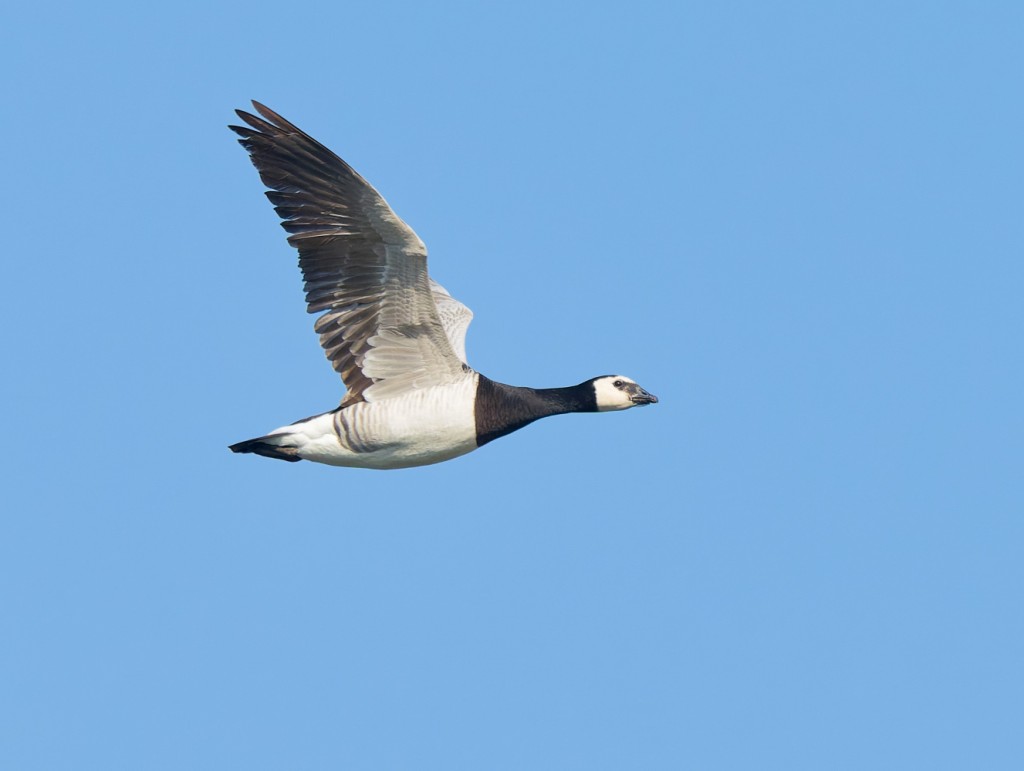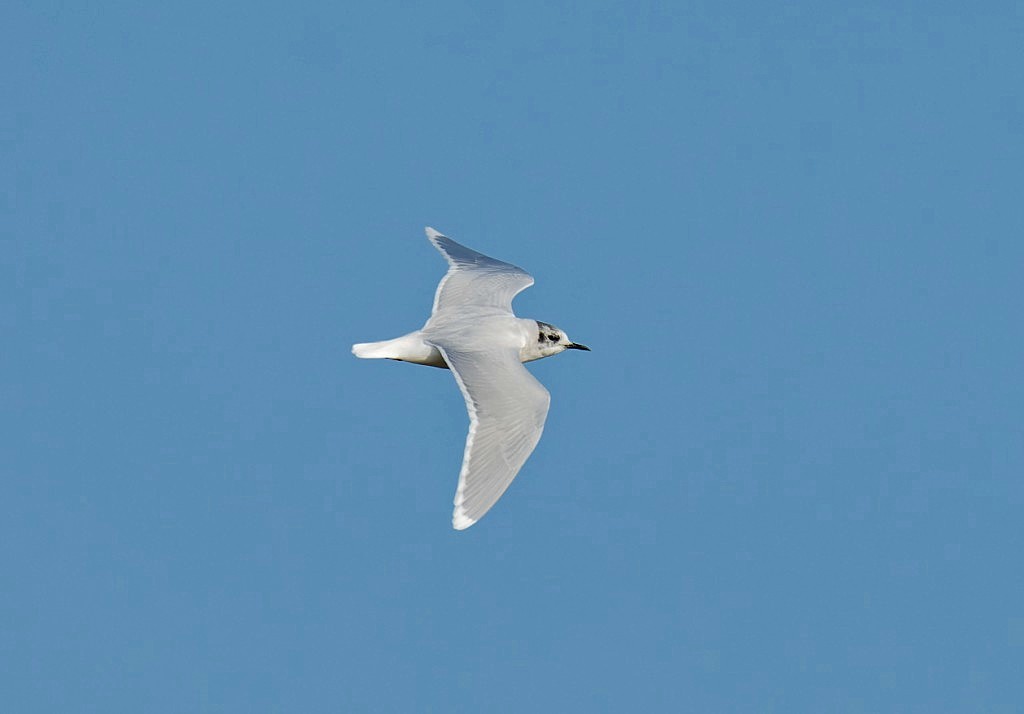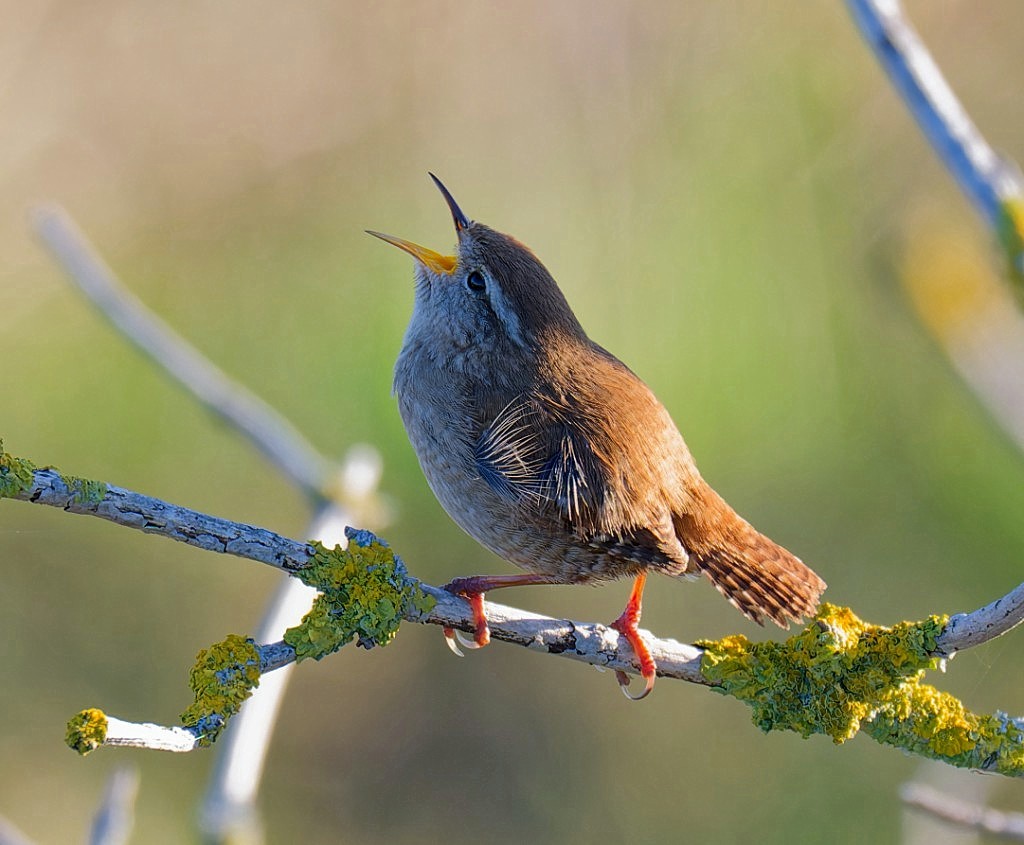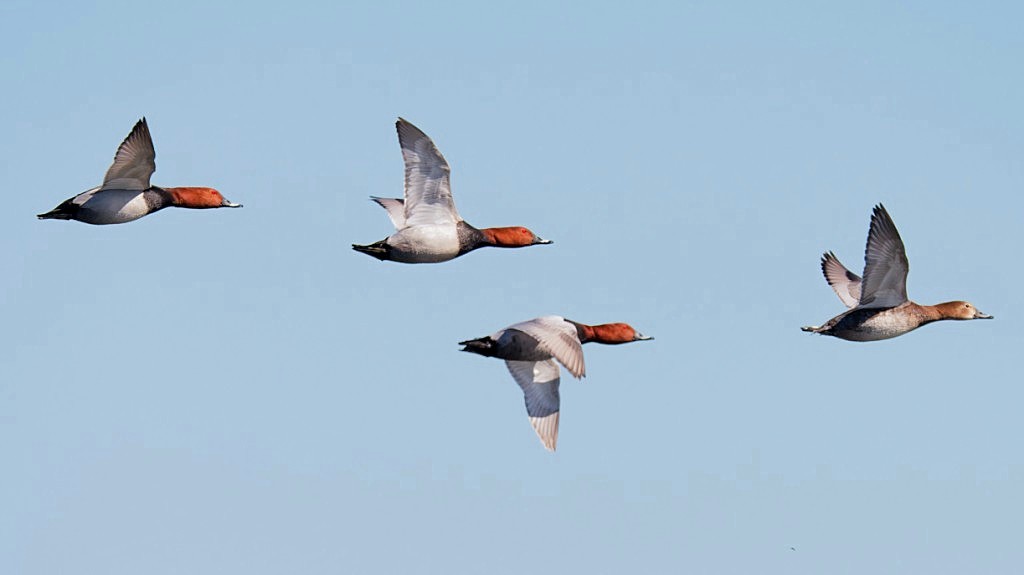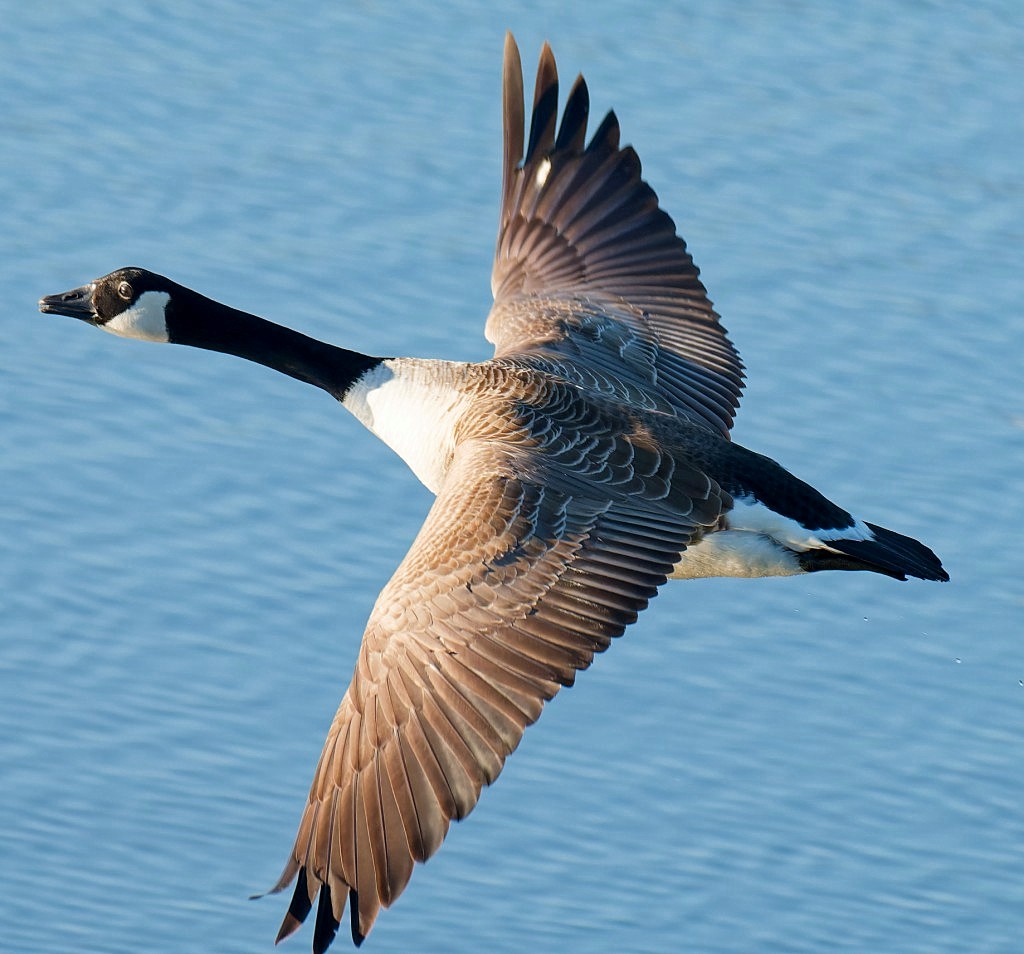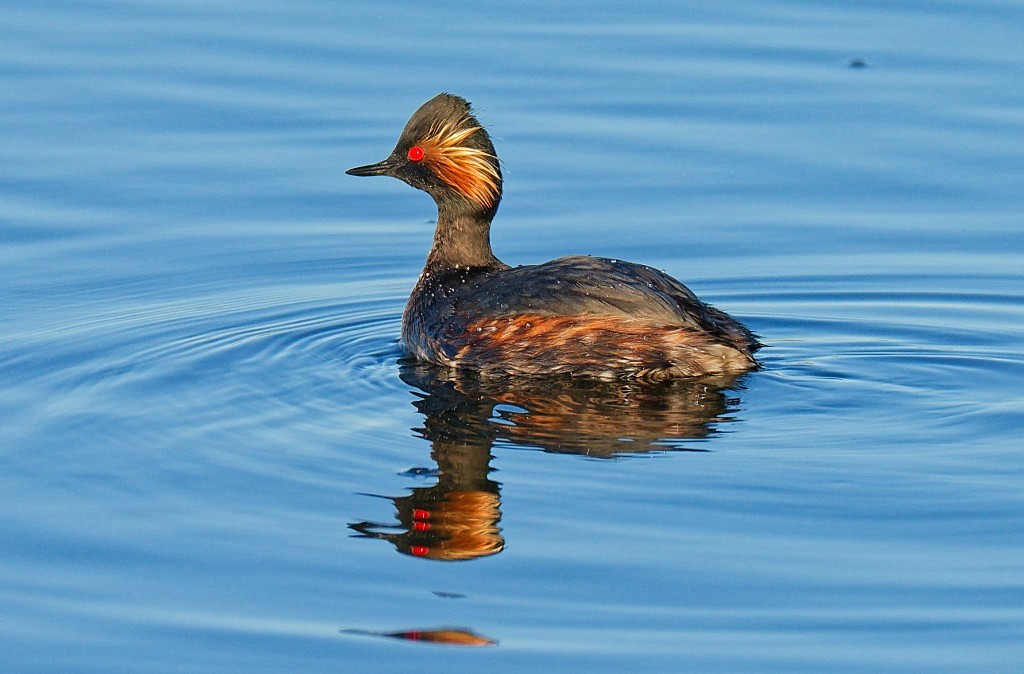Woolston Eyes Monthly Sightings
2025-04-29
t was an interesting morning, with blue skies at dawn, a significant arrival of Black-necked Grebes and a hot day ahead of us. A week or so ago it looked as if the majority of of our grebes had moved on, so it was a surprise to find 46 spread around No.4 bed across the morning. Many, we’re sure, were overnight arrivals as they were interacting in groups and calling frequently, which is typical. Some though, may have been failed breeders, as a good handful of nests which we were observing have been abandoned. We suspect this might be due to the presence of predatory Mink on the bed, which is worrying. Given the summer-like weather, many butterflies were on the wing and we saw our first dragonflies of the year, with counts of: 1 Broad-bodied Chaser, 1 Four-spotted Chaser, 1 Common Blue Damselfly, 6 Azure Damselflies and 10 Blue-tailed Damselflies. Highlight of the morning, though, were the eight Ruff which dropped in to feed and were still settled when we left in early afternoon, with Ringed Plover, Mediterranean Gull and Little Ringed Plovers also noted. Photo of a Mediterranean Gull Cheers David Bowman (with Dan Owen)
Submitted by: David Bowman
2025-04-27
Photo of a Lapwing with three eggs on the Morgan Hide scrape Cheers David
Submitted by: David Bowman
2025-04-27
It’s been a week with spring migration in full flow, with a wide variety of birds recorded, particularly on the No.4 bed wetland. Species noted have included: Greenshank, Green Sandpiper, Tree Pipit, Yellow Wagtails, Mediterranean Gulls, Common Sandpipers, Bittern, Garden Warblers, Yellow-legged Gull, Barn Owl, Egyptian Geese, Hobby, Lesser Whitethroats, Whimbrel, Swifts and plenty of the commoner warblers and hirundines. Saturday morning then produced three Woolston scarcities, with a Wood Sandpiper dropping in, followed by two Ruff and then a stunning male Whinchat. There were also plenty of aerial feeders, with 20 Swifts, 50 Sand Martins and low double figure counts of Swallow and House Martin. Finally, this morning Dan Owen reported a Red Kite showing well, again over the No.4 bed wetland. With hot weather ad southerlies forecast for the coming week, it could be another good one. Photo of the Whinchat Cheers David Bowman (with Dan Owen and Helen Wynne)
Submitted by: David Bowman
2025-04-18
There was a nice trickle of migrants yesterday, with cool overcast weather giving way to sunshine by lunchtime. On No.4 bed waders included 5 Dunlin, 2 Little Ringed Plovers, 2 Common Sandpipers, 1 Oystercatcher and 3 Common Snipe. Out on one of the breeding islands a single Wheatear and three White Wagtails were nice to see, as both are relatively uncommon spring migrants on the Reserve. It was disappointing to see that almost all the 650 Black-headed Gulls which were settling to breed a few weeks ago have now gone. Whether this is due to human disturbance (we recently saw a woman with her dog flushing everything in the gull colony) or the presence of predatory Mink, or both, is hard to know. Equally, fewer Black-necked Grebes were visible than recently, which is slightly worrying. It may be, though, that a number of females are now on nests or that some grebes are flying out to visit other waters, as they frequently do in spring before finally settling down to breed. One thing we know for sure is that without the protective umbrella of mobbing Black-headed Gulls keeping predators at bay, Black-necked Grebes become far more skulking and unobtrusive. We’ll see. A pair of Pintail was also present and we remain hopeful of adding them to our breeding list. The spectacle of the morning was the 500 Sand Martins, which appeared at dawn and must be roosting somewhere on the Reserve and which frequently perched in stands of emerging Willow. Photo of a Sand Martin Cheers David Bowman
Submitted by: David Bowman
2025-04-15
Firstly, thanks for the amazing support people have given to our retrospective planning application for the No.4 bed viewing platform, with scores of positive emails being sent in to the WBC planning department. One of our many permit holders was also outstandingly generous and donated £1,500 to cover all the costs of our application, for which we are so grateful. I’ll keep people in the loop as our application progresses. So, back to the birds! Saturday was our monthly Wetland Birds Survey (WeBS) day and highlights among the 1,762 water-birds counted included: an astonishing 145 grebes, including a record count of 62 Black-necked Grebes, 1 Garganey, 8 Water Rails, 3 Kingfishers, 1 Green Sandpiper, 2 Little Ringed Plovers, 2 Common Sandpipers,1 Jack Snipe, 14 Snipe and 6 Mediterranean Gulls. Other species picked up along the way included a male Redstart, a Tree Pipit, 4 Wheatears, a White Wagtail, a Whitethroat and two each of Grasshopper Warbler and Sedge Warbler. This morning was cooler than recently and overcast on No.4 bed at dawn, where 400 Sand Martins and a handful of House Martins were hawking low over the water. A few waders were present, with 1 Dunlin, 1 Curlew, 2 Common Sandpipers and 2 Little Ringed Plovers. Then, on No.3 bed I spent a stressful hour watching a nesting pair of Lapwings trying to defend their nest from the clumsy attention of three Egyptian Geese. They tried everything in their repertoire, from violent mobbing to a “broken wing” distraction display and, in the end, drove the geese away. When I left the female had settled back onto her nest on the Morgan Hide scrape, with her single egg still miraculously intact. Photo of Egyptian Geese Cheers David Bowman
Submitted by: David Bowman
2025-04-10
With clear skies last night and a Moon which was close to full, conditions were ideal for Black-necked Grebe migration. With more than forty already settled on No.4 bed we were hopeful that a few more might have arrived to join them. We started the day, however, with a dawn visit to No.3 bed, to see if the drake Ferruginous Duck was still present. In the event, it wasn’t but we were treated to a smart female Garganey right in front of the Morgan Hide instead. Then it was over to No.4 bed where diligent and repeated counting took us to the unprecedented total of 57 Black-necked Grebes, five more than the previous record count, with plenty of time for still more to arrive. Other sightings included a Redstart, two adult Mediterranean Gulls, three Little Ringed Plovers and two Common Sandpipers. On the debit side, our Black-headed Gull colony has been partly abandoned, dropping from 550 on Tuesday to 70 today. Given the proven positive association between breeding Black-headed Gulls and Black-necked Grebes, this is disturbing. We are concerned that this may have been caused by repeated trespass onto the bunds of the wetland which, unfortunately, has recently included a number of our permit holders, as well as people with no legitimate right of access. Can I ask all permit holders to acquaint themselves with the permitted paths, to stay off the bunds and view from the elevated platform? Thanks in advance for your cooperation. Photo of the female Garganey Cheers David Bowman (with Dan Owen)
Submitted by: David Bowman
2025-04-08
First visit for 2025 and what perfect weather. Just wanted to share a couple of photos. My first Chiffchaff and a fun confrontation Heron and Lapwing
Submitted by: David Lennons
2025-04-09
It was a perfect spring morning yesterday, with a light frost at dawn, a mist over the wetland and then the sun burning through to bring a summer-like afternoon. We’d set ourselves to conduct a full breeding bird survey of No.3 bed but halted briefly in the Morgan Hide where Dan managed to pick out the distinctive shape of a distant male Ferruginous Duck, despite looking into the glaring sun. It was almost certainly the same one which had stayed around for a while before disappearing a month or so ago. We then completed the survey, with highlights of: 2 Willow Tits, 2 Reed Warblers, 3 Willow Warblers, 20 Blackcaps, 12 Cetti’s Warblers, 66 Chiffchaffs, 14 Song Thrushes, 54 Robins, 54 Wrens and 7 Reed Buntings. Then it was over to No.4 bed for a relaxed couple of hours, with 41 Back-necked Grebes, 2 Little Ringed Plovers, 1 Common Sandpiper, 1 Snipe, 2 Oystercatchers, 2 Barnacle Geese and 2 Swallows the pick of the bunch. Photo of a Black-necked Grebe Cheers David Bowman (with Dan Owen)
Submitted by: David Bowman
2025-04-05
It was an ideal morning for a breeding bird survey of No.2 bed, where the contrast of deep blues skies with the flaming yellow of flowering Gorse and Broom made for a spectacular backdrop. No.2 bed is an operational bed, receiving dredgings from the Ship Canal, and thus receives less attention from the wardening team than the beds which are open to our permit holders. It is, nevertheless, a superb wetland in its own right and the heavily vegetated banks and bunds hold large numbers of breeding passerines, which were our focus this morning. We counted nearly 400 birds of 33 species, almost all of which were holding territories. Highlights were: 3 Willow Warblers, 56 Chiffchaffs, 26 Blackcaps, 11 Cetti’s Warblers, 2 Swallows, 45 Robins, 54 Wrens, 17 Song Thrushes and 15 Linnets. Later in the morning we spent some time on No.4 bed, where the Black-necked Grebe population is holding steady at around 40 with Little Ringed Plover, 1 House Martin and 60 Sand Martins also noted. Photo of a Sand Martin Cheers David Bowman (with Dan Owen, Helen Wynn, Brian Baird and Brian Martin)
Submitted by: David Bowman
2025-04-03
When a fresh easterly is blowing in April, there is always the chance of connecting with a passing Little Gull. These diminutive gulls, the world’s smallest, winter at sea before moving eastward to breed on lakes and marshes in northern Europe. Today one flew past our heads as we were standing on the No.4 bed viewing platform. It looked as if it might be dropping in to feed, which they do in dipping, tern-like fashion, but then pressed on towards No.3 bed before being lost to sight. Hopefully we might get to enjoy one or two more before the spring is over. Other sightings around the bed included two Little Ringed Plovers, 40 Black-necked Grebes, 1 House Martin, 2 Willow Warblers, 50 Sand Martins, a drake Goosander, 33 Blackcaps, 91 Chiffchaffs and a feral pair of Barnacle Geese. Photo of the Little Gull Cheers David Bowman (with Dan Owen)
Submitted by: David Bowman
2025-04-01
Clear skies overnight brought another influx of Black-necked Grebes, with 36 counted on No.4 bed this morning. The continuing south-easterly breeze and blue skies also brought a handful of waders through, with: 2 Little Ringed Plovers, 1 Common Sandpiper, 1 Curlew and 1 Redshank putting in appearances. A pair of Garganey which gave brief views before skulking into cover were hopefully some of our returning breeding birds, while a Little Egret and the regular Yellow-legged Gull were also notable. Between Beds 3 and 4, at least seven Marsh Harriers were active all morning and included a newly arrived adult male, as well as the pair which has been displaying and nest building on No.3 bed. The only disappointment on a really enjoyable morning was that the hoped-for heavy passage of Sand Martins, and potentially other hirundines, didn’t occur, with just one Swallow and a handful of Sand Martins noted. On the same date and in similar conditions three years ago, we were treated to 9,400 Sand Martins passing through, along with 155 Swallows and 5 House Martins. It’ll probably happen tomorrow, when neither of us will be present! Photo of a Black-necked Grebe Cheers David Bowman (with Dan Owen)
Submitted by: David Bowman

